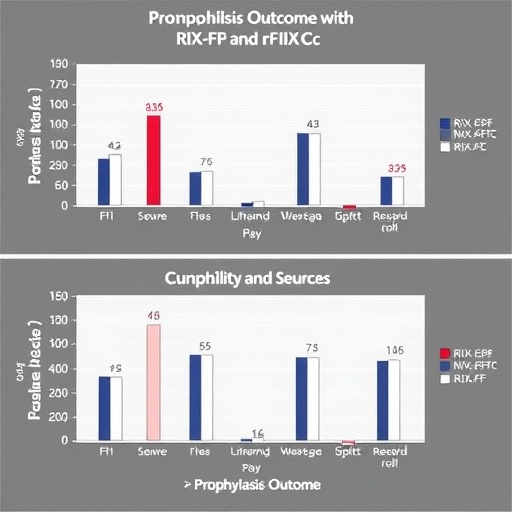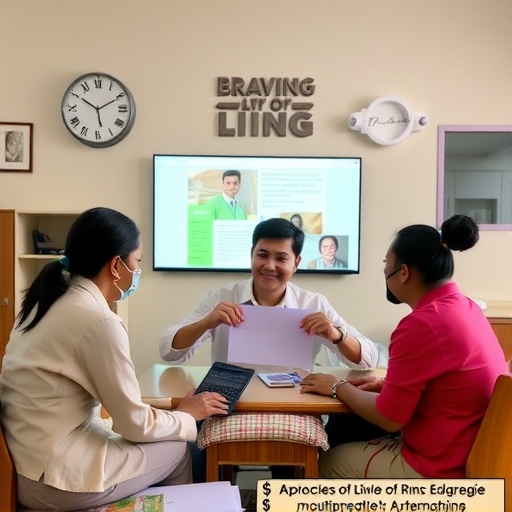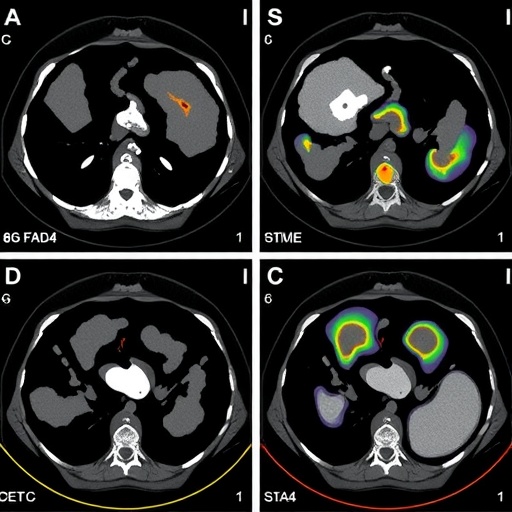PROTECT YOUR DNA WITH QUANTUM TECHNOLOGY
Orgo-Life the new way to the future Advertising by Adpathway
In the evolving landscape of health policy and systems research, the ability to position policy documents effectively is becoming increasingly critical. As evidence-based practices continue to shape the methodologies adopted by health systems globally, the role of policy documents emerges as a pivotal element in bridging the gap between research findings and practical applications within healthcare settings. The study, led by Almubarak, explores this intricate nexus, shedding light on how strategic positioning of policy documents can influence decision-making processes that affect public health outcomes.
Research indicates that policymakers often rely heavily on documents that distill complex empirical data into actionable insights. Almubarak’s work emphasizes that the clarity and relevance of policy documents can enhance their acceptance among stakeholders and ultimately lead to more informed health policies. This underscores a growing recognition that, beyond mere information dissemination, the methodologies employed in crafting these documents can significantly shape their influence and implementation in health systems.
The positioning of policy documents hinges on several factors, including the credibility of the sources and the manner in which evidence is presented. Assembling a robust body of research is essential, yet the translation of these findings into practical policy guidelines is where many initiatives falter. Almubarak argues that by effectively positioning these documents—with attention to format, language, and contextual relevance—researchers can significantly increase the likelihood of their adoption in real-world applications.
A deep dive into the mechanisms of policy document positioning reveals various strategies that can enhance their visibility and uptake within health systems. For instance, the use of simplified language and compelling narratives can render complex data more accessible to policymakers who may not have scientific backgrounds. Ensuring that these policy documents are both informative and engaging will promote broader discussions around health policy development and implementation.
Almubarak’s analysis takes into account the diverse audiences that policy documents must cater to within the health ecosystem. From high-level policymakers to frontline healthcare workers, understanding the unique needs and perspectives of these groups is crucial for effective communication. By tailoring content to these varied stakeholders, policymakers can foster a more inclusive dialogue around health issues, leading to a collaborative approach in health system improvements.
Moreover, the timing of policy document release is another critical aspect discussed in Almubarak’s research. Aligning the dissemination of documents with ongoing public health debates or crises can heighten their relevance and urgency, thus amplifying their potential impact. The dynamic nature of health challenges necessitates that researchers not only produce high-quality documents but also ensure their timely arrival in the hands of those tasked with implementing health strategies.
In examining the successes and setbacks of various health policy initiatives globally, it becomes evident that the positioning of policy documents plays a vital role in achieving successful outcomes. For example, case studies highlighted in Almubarak’s work illustrate how some health systems have been transformed through the intelligent positioning of evidence-based policy documents during critical moments of reform. As healthcare challenges grow increasingly complex, the ability to swiftly navigate these issues through effective policy communication becomes paramount.
Importantly, Almubarak’s research also touches on the ethical dimensions of policy document positioning. The selection of what constitutes relevant evidence can often reflect broader societal values and biases, reminding us that the framing of health issues is not merely a scientific endeavor but also a socio-political one. It raises the question of how we ensure that diverse voices and perspectives are integrated into policy discussions, thus avoiding the marginalization of certain groups within the health narrative.
In addition to ethical considerations, the study also acknowledges the technological advancements that are reshaping how policy documents are created and distributed. Digital platforms are unlocking avenues for broader stakeholder engagement and feedback, allowing for more iterative and participatory processes in health policy development. Almubarak’s insights suggest that leveraging technology could lead to more robust and accepted health policies that resonate with a diverse audience.
Another crucial point made in the study pertains to the necessity for ongoing evaluation and adaptation of policy documents. Making health policy a living document—one that evolves based on new evidence and stakeholder input—could enhance its effectiveness over time. Institutionalizing this feedback mechanism could ensure that health policies remain responsive to emerging health trends and societal needs.
In essence, Almubarak’s exploration into the positioning of policy documents serves as a clarion call for health researchers and practitioners to reevaluate their approach to policy development. By focusing on the strategic placement of evidence and engaging stakeholders throughout the process, health systems can transform into more adaptive, evidence-driven entities capable of addressing the multifaceted challenges of modern healthcare.
As we look towards the future, the lessons gleaned from Almubarak’s analysis will be vital for shaping the next generation of health policy documents. The implications of this research stretch far beyond the academic realm, influencing real-world health system reforms and ultimately impacting population health. It is this synergy between rigorous research and strategic policy positioning that promises to enhance the efficacy of health systems worldwide.
Ultimately, Almubarak’s work stands as a pivotal reminder of the power of effective communication in shaping health policy outcomes. As the field continues to evolve, the strategic positioning of policy documents will remain a fundamental aspect of translating research into practice. The journey from ideation to implementation is fraught with challenges, but with the right tools at our disposal, we can forge pathways toward healthier societies.
In conclusion, the positioning of policy documents in health policy and systems research is not merely a procedural task; it is an art that requires foresight, sensitivity, and an understanding of the multifaceted landscape of healthcare. Stakeholders must embrace this responsibility wholeheartedly, as the implications of their efforts can reverberate through communities and healthcare systems alike, ultimately contributing to more informed, equitable, and effective health policy decisions.
Subject of Research: The relationship between the positioning of policy documents and their effectiveness in health policy and systems research.
Article Title: The positioning of policy documents in the field of health policy and systems research.
Article References:
Almubarak, S. The positioning of policy documents in the field of health policy and systems research. Health Res Policy Sys 23, 65 (2025). https://doi.org/10.1186/s12961-025-01344-6
Image Credits: AI Generated
DOI:
Keywords: health policy, systems research, policy documents, evidence-based practice, stakeholder engagement.
Tags: actionable insights for policymakersbridging research and practice in healthcarecrafting effective health policy documentscredibility of health policy sourcesdecision-making in public healthenhancing public health outcomes through policyevidence-based health policyhealth policy positioning strategiesinfluence of policy documents in healthcaremethodologies in health systems researchstakeholders’ acceptance of health policiestranslating research findings into policy


 3 hours ago
1
3 hours ago
1





















 English (US) ·
English (US) ·  French (CA) ·
French (CA) ·